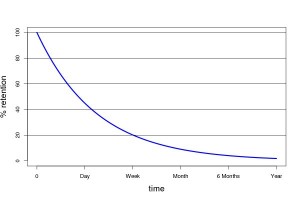The fact is none of us, with the exception of some weird brilliant people who likely don’t prep, have the mental capacity to remember everything we read in book and on websites. I’ve found that unless I am constantly working with something I often lapse in proficiency and forget many key steps.
Thus my mother gave me a great idea that I’ve used in the past and would like to share as food for thought. I’ve gotten a lot of inspiration from my mother concerning edible plants because it is a hobby of hers. She visits websites and when articles catch her eye she hits the print button and accumulates the knowledge in a three ring binder.
I’d ask that you do the same, not just with this website, but with all similar media. With a hard copy in hand you are setting yourself up for success no matter what is thrown your way. We like to read and learn, but we also lose the majority of what we peruse through. The information below was drawn straight form scc.spokan.edu on Jim Roth’s website, The Curve of Forgetting, and is worth learning from.
Jon
“How memory works is not a big mystery. We can easily remember the ideas, items, and information that we turn our attention to often, and we can quickly forget the ideas, items, and information that we “touch” only once or twice. This natural forgetfulness of information we touch only once or twice is a quality of a healthy mind–after all, why store information we tell our minds we won’t need? So the point is simple: We tell our memories what’s important to store by how many times we practice retrieving the information. The more times we practice—the more times we touch the information–the more permanently the information will be stored. Before we continue, let’s look at how scientists think memory works: 100 Billion Neurons.
The Curve of Forgetting graph below (originally called The Ebbinghuas Curve after the German philosopher Hermann Ebbinghaus who developed it in 1885) demonstrates how quickly we forget new information we don’t work with repeatedly. Here’s what the graph demonstrates: Assume that we hear ten new terms in class on Monday. Our immediate recall, Point A of the graph, is 100%–we can repeat the terms and definitions at the point where we first encounter them.
However, if we do not repeatedly return our attention to these terms and definitions, we will forget about 40% over the first 24 hours (Point B). If we wait another 24 hours before reviewing the information, we have lost 60% (Point C). So we can go from a grade of ‘A’ (100%) to ‘D’ (60%), to ‘F’ (40%) in just 48 hours.”
The forgetting curve below came from flashcardlearner.com and is comparable to what you will find in textbooks and other websites. The Graph below is not the same graph from the website I quoted above, hence the absence of letter points, there is some argument about information retention depending on material type but it is a great visual demonstration.



Leave a Reply